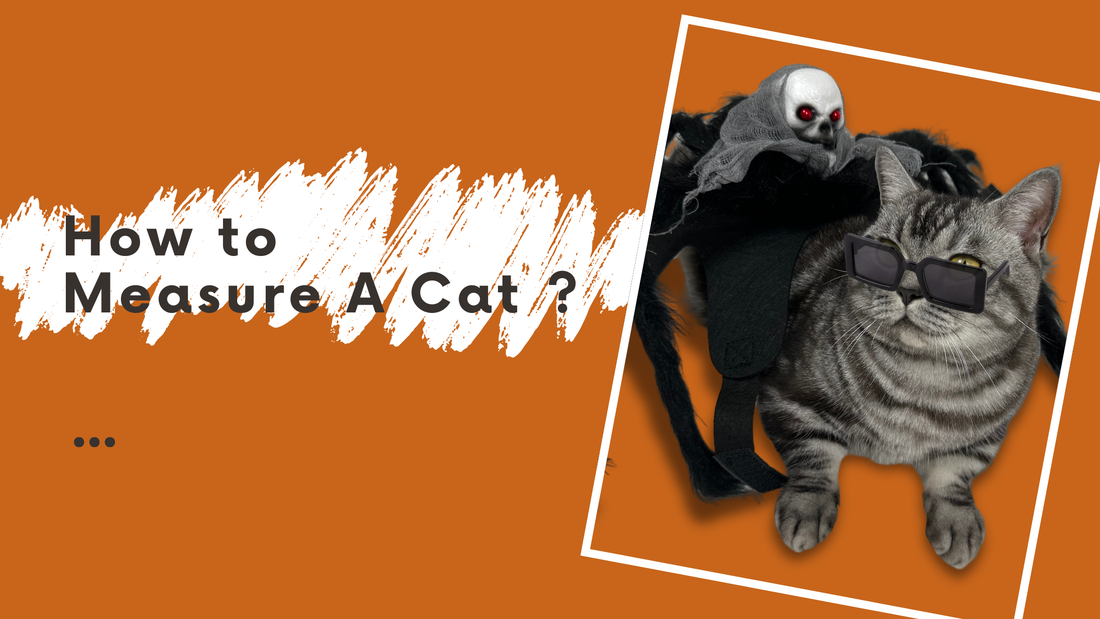
How to Measure Your Cat for the Perfect Costume: A Lab-Inspired Guide
The Science of Style: Why Measuring Matters
Before you grab that adorable shark outfit or pumpkin sweater, pause to take a few measurements. Cats come in all shapes and sizes—from lean sprinters to plush lounge scientists—and the perfect fit ensures comfort and mobility. Ill-fitting costumes can restrict movement or irritate fur, leading to stress rather than joy. According to the American Veterinary Medical Association (AVMA), ensuring comfort and freedom of movement is key to a cat’s wellbeing during dress-up events. Think of this process as preparing for an experiment where precision equals success.
Step 1: Prepare Your Experimental Subject
Every great experiment begins with the right mindset—yours and your cat’s.
Start by choosing a quiet, distraction-free space. Cats are naturally curious yet cautious creatures, so make the environment inviting: low lighting, gentle music, and familiar scents can help them feel at ease. Offer a few treats or a short play session with their favorite toy before beginning. A relaxed cat produces the most accurate data.
Pro tip: If your cat is prone to sudden “escape attempts,” consider wrapping them gently in a soft towel like a feline burrito. This technique, recommended by the Humane Society, provides security without stress.
Step 2: Position the Cat for Observation
Now it’s time to “set up your lab.” Place your cat on a soft, stable surface—like a blanket-covered table or couch. Avoid slick or cold surfaces that might make them uneasy.
Stand or sit beside them at eye level rather than looming overhead; this reduces intimidation and helps keep them still.
This step is all about comfort and consent. Read your cat’s body language—relaxed ears, a calm tail, and slow blinking indicate readiness. If your cat shows signs of stress (flattened ears, twitching tail, or vocal protests), pause the experiment and try again later. Successful measurement relies more on patience than speed.
Step 3: Take Precise Measurements
Now comes the data collection phase—the fun part!
Grab a soft, flexible measuring tape (the kind tailors use). If you don’t have one, a piece of string and a ruler will do the trick. You’ll be measuring three main areas:
1.Neck Circumference – Wrap the tape around the base of the neck where a collar would sit. Leave enough room to fit one or two fingers comfortably between the tape and fur.
2.Chest Girth – Measure around the widest part of the chest, just behind the front legs. This is the most crucial measurement for ensuring mobility.
3.Body Length – Measure from the base of the neck (where it meets the shoulders) to the base of the tail.
Optional measurements, depending on costume type, include:
Leg Length: For jumpsuits or costumes with sleeves.
Head Circumference: For hats, hoods, or helmets (for the truly committed scientist).
Keep the tape snug but never tight. Speak softly to your cat throughout the process, rewarding cooperation with treats or chin scratches. Each successful measurement deserves a celebration—after all, every great experiment recognizes positive data collection!
Step 4: Record and Analyze Your Results
Once you’ve gathered your data, jot the numbers down in a notebook or your phone. Compare them to the size chart provided by the costume manufacturer. Don’t assume your cat is a “medium” just because your dog is—the feline sizing system can differ widely by brand.
If your cat’s measurements fall between two sizes, opt for the larger one. Comfort and mobility always outweigh a “snug” aesthetic.
Think of this as your data analysis stage: interpreting results to reach a valid conclusion. The goal isn’t just a costume that fits—it’s one that your cat can move, stretch, and nap in without distress.
Step 5: Select the Perfect Costume
With your measurements ready, it’s time to choose the outfit. Whether you’re envisioning a tiny lab coat, wizard cloak, or sushi roll wrap, use your data to make an informed decision. Prioritize breathable fabrics like cotton or soft polyester, and avoid tight elastics or heavy embellishments that can snag fur.
If your cat has sensitive skin or a thick coat, lightweight designs are best. The International Cat Care Organization notes that cats are highly sensitive to heat and texture, so keep materials soft and non-restrictive.
Always introduce the costume gradually:
Let your cat sniff it first.
Drape it loosely over them for short periods.
Extend the wear time as they grow more comfortable.
This slow-introduction method mirrors the process of desensitization in behavioral science—reducing stress by creating familiarity over time.
Step 6: Document the Experiment
Every great scientist keeps records—and in this case, adorable ones! Take photos or videos of your cat’s measuring process and final costume debut. These moments make for perfect social media content, or even a pet fashion journal if you plan to expand your cat’s wardrobe.
When sharing online, always prioritize your cat’s comfort over aesthetics. If your cat seems uncomfortable or distressed, remove the costume immediately. The goal is to capture moments of joy, not discomfort.
Step 7: Reflect and Refine
After the big reveal, take note of what worked and what didn’t. Did your cat tolerate the neck closure? Was the fabric too warm? Reflection allows you to fine-tune your future “experiments.” Over time, you’ll become a master pet tailor—combining compassion, patience, and precision.
If your cat enjoyed the experience, you can even turn it into a recurring seasonal ritual—Halloween, holidays, birthdays, or themed photoshoots. Just remember: the best-dressed cats are also the happiest ones.
Final Thoughts
By treating the costume-measuring process like a fun, science-inspired experiment, you’re not only ensuring a great fit but also deepening your bond with your feline companion. Cats appreciate calm energy and consistency, and your methodical approach shows them trust and care.
In the end, your experiment’s success isn’t just in the perfect fit—it’s in the shared laughter, the soft purrs, and that proud moment when your cat struts their stuff with scientific confidence.
So grab your lab coat, gather your materials, and get ready to transform costume prep into an experiment filled with fun, precision, and furry flair. Happy measuring—and may your cat be the star of every runway, real or imagined!
References
American Veterinary Medical Association (AVMA). Pet Safety Tips: Dressing Pets in Costumes. https://www.avma.org
Humane Society of the United States. How to Calm Your Cat for Grooming or Vet Visits. https://www.humanesociety.org
International Cat Care. Keeping Cats Comfortable and Stress-Free. https://icatcare.org
Writen by Matthew
